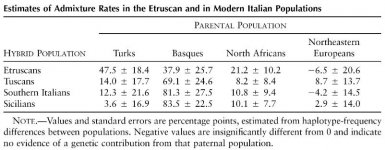Cambrius (The Red)
Regular Member
- Messages
- 2,633
- Reaction score
- 20
- Points
- 0
- Ethnic group
- Gallaecian Celtic
- Y-DNA haplogroup
- R1b (RL-21*)
- mtDNA haplogroup
- H3
Yes, facts ARE facts.
Iberians are 'Meds.', while Greeks are 'Alpines' in phenotype.
And in general Nordics and Alpines are closer to each other than Meds. to Nordics. Just take a look on Eastern Europe!
Sure, dream on. Greeks are among the most Mediterranean of population groups in Europe. Phenotypically they run the Balkanic / East Med spectrum: from Dinaric to Levantine.
It's been abundantly demonstrated through numerous DNA projects that Greeks are far more Med / Southern Euro (autosomal DNA governs phenotypic structures) than Iberians, who are majority Atlantic. That's a fact, nothing bad or good about it. If you can't accept the reality of the situation it's your loss. Time to move on.




